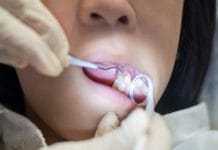The 14th century’s Second Plague Pandemic, also known as the Black Death, killed 30% to 60% of the European population and had a profound impact on European history. A study conducted by researchers from Penn State and the University of Adelaide suggests that this historical plague might have influenced changes in diet and hygiene practices, which, in turn, could be linked to shifts in the human oral microbiome. This shift in the oral microbiome may have contributed to the development of chronic diseases that affect people today.1
Dr. Laura Weyrich, an associate professor of anthropology and bioethics at Penn State, points out that modern microbiomes are associated with various chronic conditions such as obesity, cardiovascular disease, and mental health issues. Understanding the origins of these microbial communities can provide valuable insights for managing these diseases.1
The Study
One key factor in the evolution of the oral microbiome over time is believed to be dietary changes. However, limited studies have directly examined the history of the human oral microbiome within a single population. Some research has used the microbiomes of contemporary Indigenous populations practicing traditional lifestyles as a reference. However, this approach has limitations as it may not accurately reflect the ancestral microbiomes of industrialized populations. Furthermore, it places an unfair burden on Indigenous communities to participate in research that may not directly benefit them.1
A more accurate and ethically responsible approach involves studying preserved oral microbiomes found in dental calculus from the ancestors of industrialized populations with the collaboration and permission of relevant communities.1
In the largest study of ancient dental calculus to date, researchers collected samples from 235 individuals buried across 27 archaeological sites in England and Scotland spanning from about 2200 B.C. to 1853 A.D.1,2
The Results
The findings revealed the identity of 954 microbial species within these samples. They categorized them into two distinct bacterial communities, one dominated by Streptococcus, which is common in the oral microbiomes of modern industrialized populations, and the other by Methanobrevibacter, which was present in British populations going back at least 2,200 years but as of recently, since industrialization, it is rare or possibly extinct in healthy people.1
By exploring the origins of these two bacterial communities, the researchers discovered that almost 11% of the variation in microbiome species composition could be attributed to temporal changes, including the occurrence of the Second Plague Pandemic.1
Survivors of the Second Plague Pandemic were more prosperous and could afford higher-calorie foods. It is plausible that the pandemic led to dietary changes that, in turn, influenced the composition of oral microbiomes.1,2
To investigate the link between diet and the emergence of the Streptococcus group and the extinction of the Methanobrevibacter group, the researchers analyzed functional differences among these bacteria related to diet, such as traits associated with high or low dietary fiber digestion, carbohydrate metabolism, and lactose metabolism.1
Researchers found that the Streptococcus-dominated group had more functional traits linked to low-fiber, high-carbohydrate diets, as well as dairy consumption, which aligns with modern diets. In contrast, the Methanobrevibacter-dominated group lacked traits associated with dairy and sugar consumption, which were characteristic of the diets of some ancient humans.1
Furthermore, the study revealed that the Methanobrevibacter group, which has been linked to severe periodontitis in modern populations, was not associated with periodontal disease or other oral pathologies such as apical abscesses or caries in ancient British oral microbiomes. This group was associated with inflammatory skeletal pathologies instead.1
In contrast, researchers unexpectedly found that species linked to periodontal disease in modern populations, such as P. gingivalis and T. forsythia, were more likely associated with the Streptococcus group. This might suggest that periodontal disease in modern populations may originate from Streptococcus-associated microbial communities.1
The researchers’ findings suggest that the oral microbiome compositional shifts might be attributed to “advancements in modern dentistry (for example, the routine removal of large calculus deposits and the use of modern oral hygiene products), shifts in dairy and carbohydrate consumption, and medical care.”1 Although the researchers state, “further work should explore additional lifestyle changes post-1900s, including migration and nutrition.”1
Conclusion
In summary, this research suggests that the oral microbiomes of today may reflect past changes in diet influenced by the Second Plague Pandemic. Importantly, this work contributes to our understanding of modern-day chronic, noncommunicable diseases and their potential historical origins.
Before you leave, check out the Today’s RDH self-study CE courses. All courses are peer-reviewed and non-sponsored to focus solely on high-quality education. Click here now.
Listen to the Today’s RDH Dental Hygiene Podcast Below:
References
- Gancz, A.S., Farrer, A.G., Nixon, M.P., et al. Ancient Dental Calculus Reveals Oral Microbiome Shifts Associated With Lifestyle and Disease in Great Britain. Nature Microbiology. 2023; 8(12): 2315-2325. https://doi.org/10.1038/s41564-023-01527-3
- LaJeunesse, S. (2023, December 5). Study of Ancient British Oral Microbiomes Reveals Shift Following Black Death. Pennsylvania State University. https://www.psu.edu/news/research/story/study-ancient-british-oral-microbiomes-reveals-shift-following-black-death/











